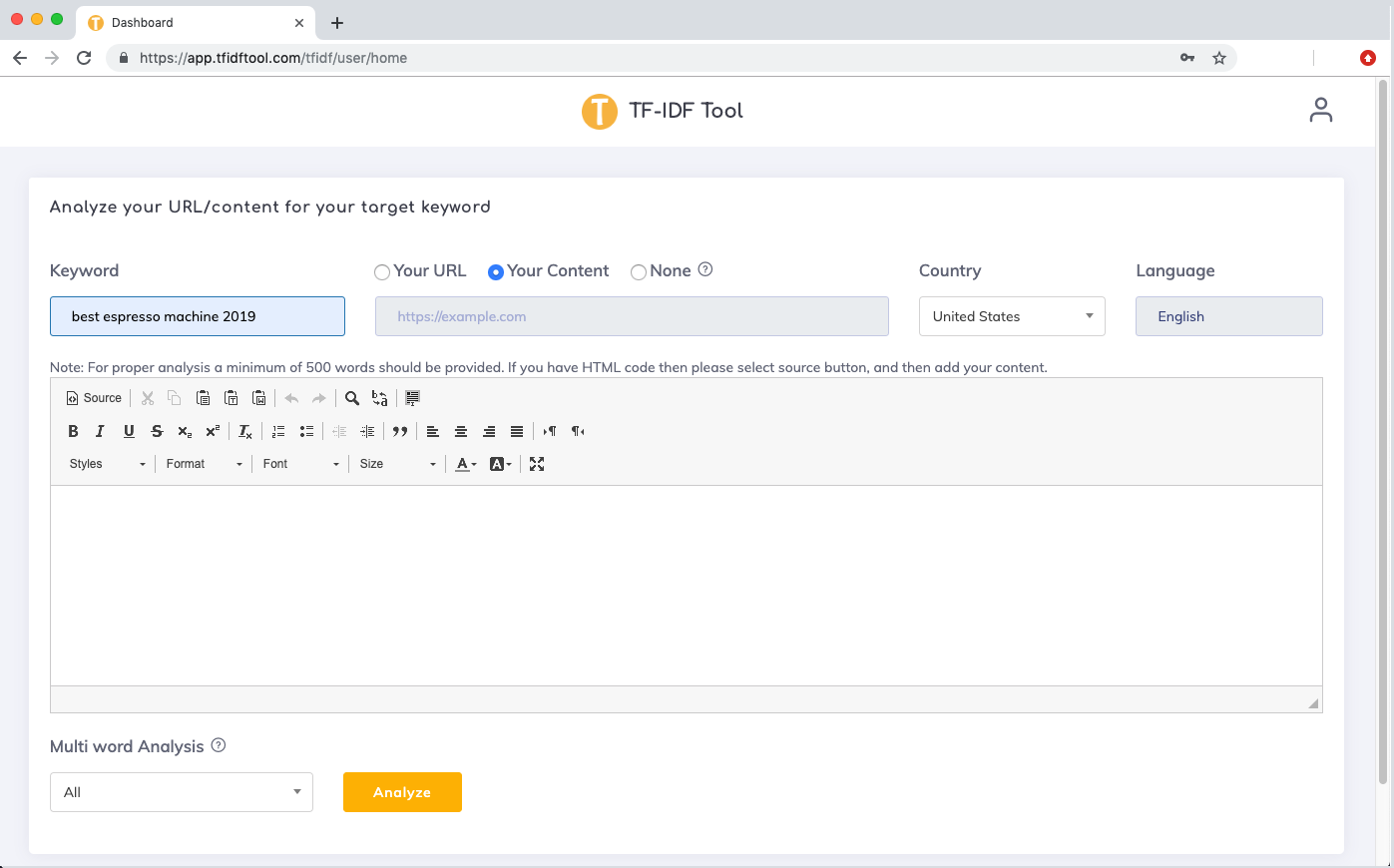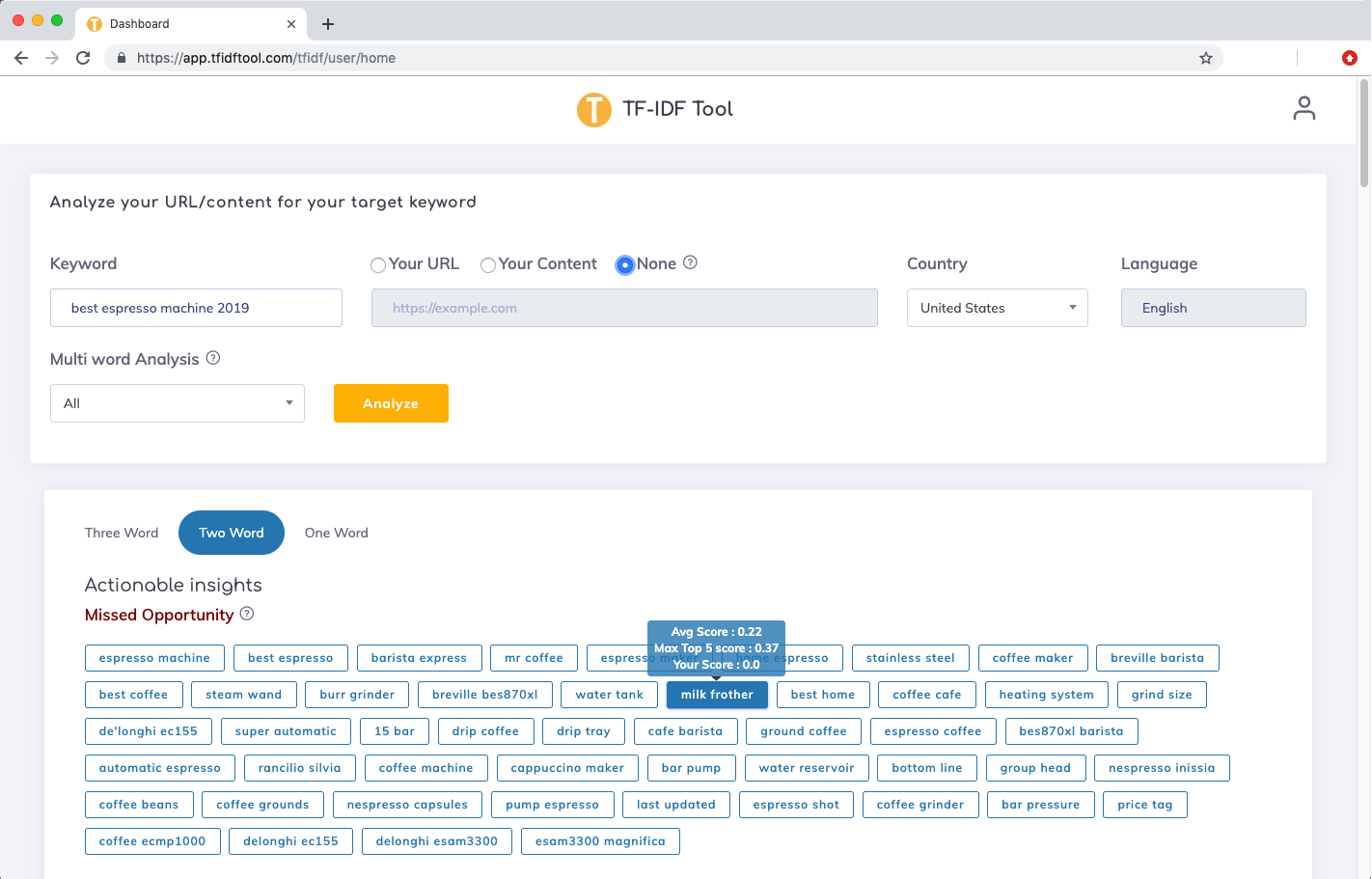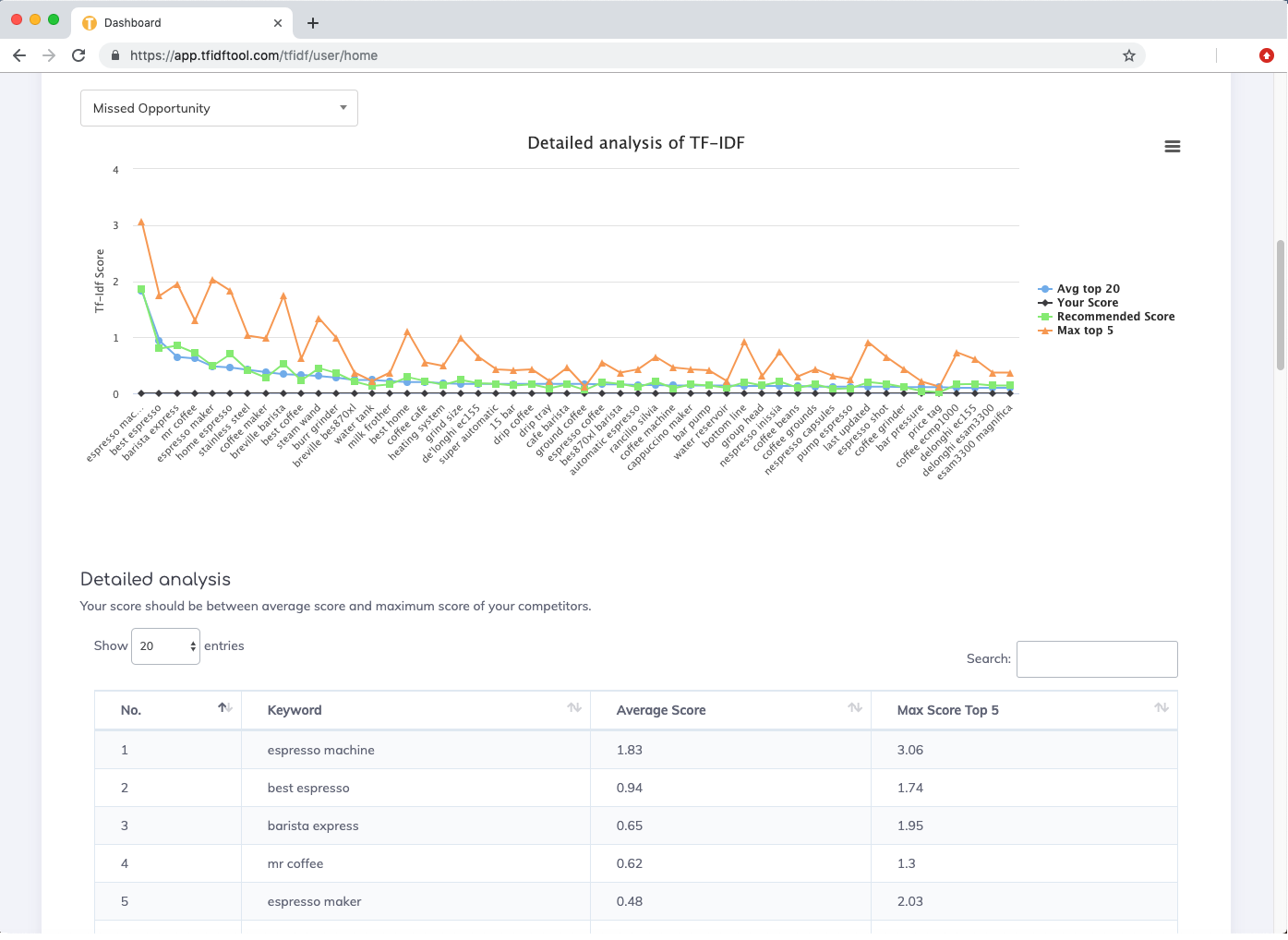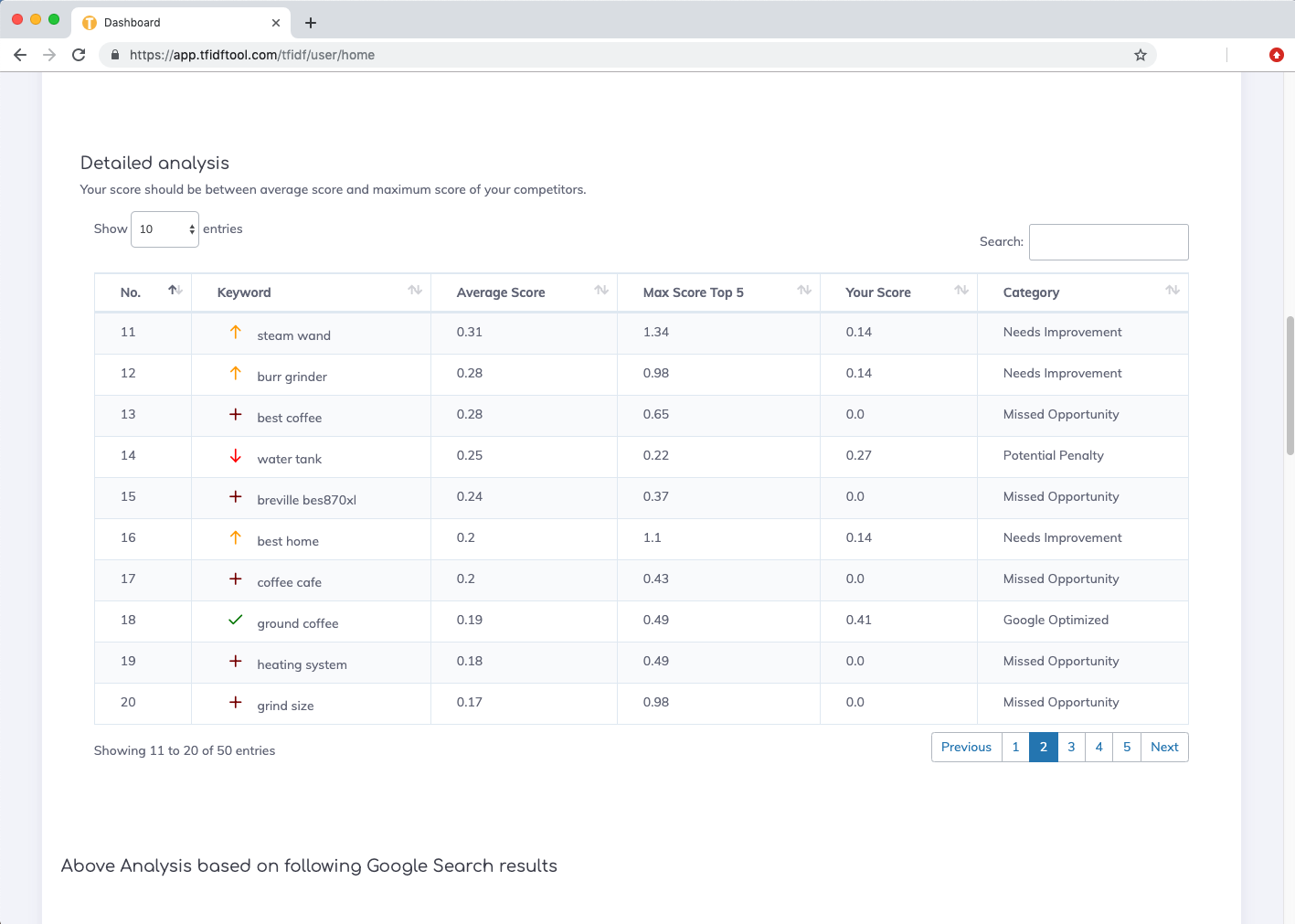What is TF-IDF, how do you use it for SEO?
You may have heard of TF-IDF as a buzzword in digital marketing, specifically content optimization and on page SEO over the last few years.
You may be wondering - what is it, and how will it help me? Why does my head hurt every time I read about it?
I promise to explain what TF-IDF analysis is and how it would help you, without getting into any in-depth technical details, however, if you’d like technical info check out our other in-depth article that explains what term frequency and inverse document frequency are all about.
What is TF-IDF?
TF-IDF is an algorithm that’s the basis of every search engine out there. If you were creating one tomorrow, this is most likely where you would start.
It’s a way of figuring out what content is the most relevant to a user’s search.
To be sure many factors affect how Google ranks pages, and there are many ranking factors such as authority, backlinks, and others that matter.
But the basis of all search engines and the reason they exist is to help the user find what they are looking for in the vastness of the internet. And to this end goal, content is the most important. High-quality content that most closely matches the user’s search intent.
What does this optimization strategy do that others don’t?
It shows you what terms are relevant. It is not about keyword density but more about having enough relevant content.
Why the sudden interest in advanced SEO using TF-IDF?
Google seems to be focusing on relevancy based on its last few algorithm updates, what better way to figure out how to improve relevance than with an approach that does exactly that.
How does the TF-IDF Tool do this?
The approach we use is not to attempt to game the system but to go back to the basics. Our approach is always to focus on writing high-quality original content but to use our tool to make sure you have not missed anything or aren’t overusing anything either.
We look at all the top ranking sites that Google thinks are relevant to a user’s search. Then we work out backward from there and find all terms in the content which are related to that search.
If a term frequently occurs in the content of all the top ranking websites, then it must be relevant. We also use this algorithm to figure out what content is not truly relevant because it occurs too often.
How will a TF-IDF analysis help me?
We give you actionable insights on what exactly you can do to improve your content.
If you are just starting out to write new content, you can use our tool to get a list of all essential terms related to your core topic and then you can approach your content strategy armed with that list. Doing this will make sure that you do not miss out on any critical terms. This is also an excellent time to use our tool for keyword research to find related keywords, so it's great for keyword inspiration.
Or if you prefer writing your content first as I do, you can use our tool to analyze it after writing your initial draft and use our tool before publishing it and making edits to improve relevance.
If you already have a URL, that is not ranking as well as it should, and there is a fair chance that the content could be the reason, you can use our tool to compare your website with your top performing competitors and figure out if you are missing something that they are targeting.
Our tool gives you actionable things to look at, as shown here. The image below shows TF-IDF analysis run on a draft version of this very article.
How to run a TF-IDF Analysis?
Step 1: Simply enter your target keyword and either your URL or content

You can choose to enter just the keyword and nothing else if you want to just research the keyword
You can also choose to perform the analysis on one, two, three words or all
Step 2: Look at the analysis

Missed Opportunity: Here we provide you with a list of all terms that you have missed in your content. Adding these in will definitely improve your relevancy.
Potential Penalty: We call out all the terms that you have used more often than your competitors. We think this may lead Google to approach excess use as practicing keyword stuffing, and we recommend that you reduce the number of times you use this term.
Needs Improvement: This is a list of all terms you have targeted, but you are not using enough of them in your content. Add it in a bit more to see better results.
Google Optimized: You are good to go on these terms, nothing to do, good job!
We give you your score for a term along with the average score and max score of your competitors, and you can consume it however you prefer.
Directly in actionable insights, as shown above. You can hover over the term to see your score and that of your competitors.
Chart Format

Data Table Format

Step 3: Update your content
Once you have updated your content to reflect your use of the terms you have missed, sit back and let Google crawl your page and see amazing results!
Check if your content is holding you back